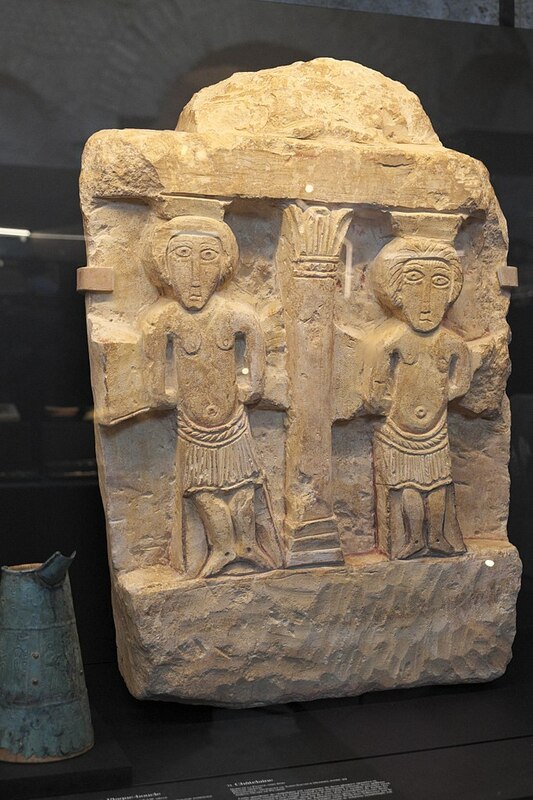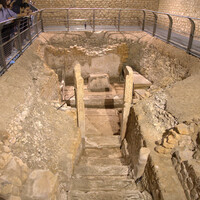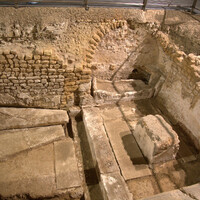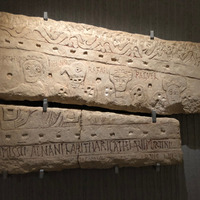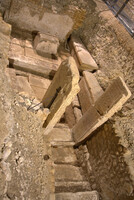Funerary hypogeum near Poitiers
Type:
Altars,
Cemeteries,
Chapels,
Sarcophagi,
Tombs
Date:
Seventh century
Location or Findspot (Modern-Day Country):
France
Description:
An underground chamber near Poitiers excavated in the seventh century to serve as a funerary chapel is known as the Hypogée des Dunes (hypogeum comes from the Greek words for hypo, under, and ge, earth; Dunes is the name of the local plateau). The hypogeum is a 5-meter-long rectangular room that was originally barrel vaulted, with one window at the east end. The steps that lead down into the space bear magical words and apotropaic imagery: serpents, fish, and knotted patterns meant to trap demons and protect the dead from evil spirits. At the bottom of the stairs are door jambs and a tall slab inscribed with prayers for Mellebaudis, a "servant of Christ" who prepared the space to hold his own tomb. A stone altar to the east is the sole liturgical furnishing. It is surrounded by Merovingian sarcophagi, set into the floor and also into arcosolia excavated in the side walls. It is likely that Mellebaudis's tomb—probably the sarcophagus in the largest arcosolium, on the north wall near the altar—was understood to be protected by divine forces, and it therefore attracted about 10 additional burials inside the hypogeum. Another three dozen individuals were buried in the cemetery outside, including some in child-size sarcophagi. In addition to apotropaic and decorative reliefs, the hypogeum also had figural sculpture. One large panel depicts and labels two angels and two evangelist symbols, and another shows the two thieves crucified alongside Jesus, as on an eighth-century icon from Mount Sinai, are now kept at the Musée de Sainte-Croix at Poitiers.
Relevant Textbook Chapter(s):
3,
4
Repository and Online Resources:
• An excellent resource in French, part 1.
• An excellent resource in French, part 2.
Image Credits:
Linda Safran, Wikimedia Commons
